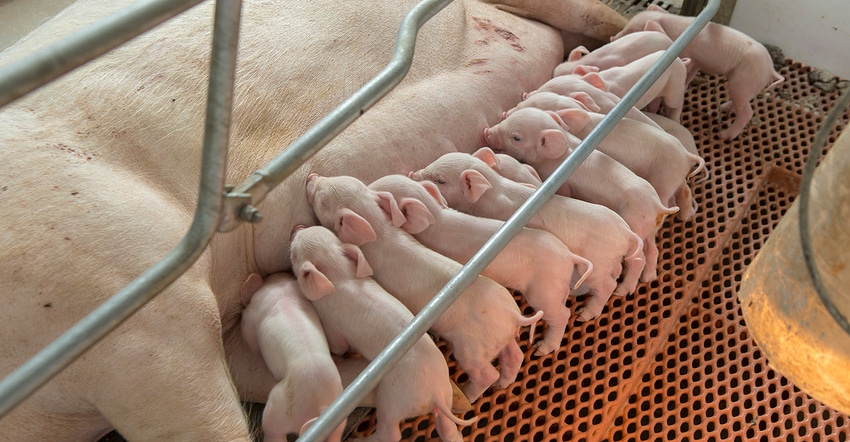Data itself doesn’t tell us anything
We collect mountains of data from sow parity to litter size and feed cost to closeout, but what questions are we trying to answer?
May 28, 2024

By Matt Frizzo, Carthage Veterinary Service
Producers are extremely good at several things: working hard, caring for their animals, and planning for their operations' future come immediately to mind. One thing you might not think to include is “data collection.”
Producers, integrators, processors and veterinarians have been collecting data for years from systems, processes and even written records. We collect mountains of data from sow parity to litter size and feed cost to closeout — and so much more. But what questions are we trying to answer? In many cases, I don’t think we have slowed down to figure out what we want to know, so we just collect everything and try to figure it out later. However, that can end with us drowning in numbers, and the data quality is likely not as good as if the collection had been a bit more strategic.
So, why do we collect it? More importantly, what more can we do with it?
Who, what, when, where, why
The basic components of writing translate to your data analytics approach as well. Although you may be managing your operation well, it is objectively easier to gauge financial or production outcomes when you measure performance with data.
First, focus on what goal you want to accomplish — what decision you want to make about your operation or herd — and choose to collect and synthesize data based on that need. It may be as broad as, “Am I getting the results I want from my spending and inputs?” or as specific as determining the proper feed rations per barn.
Challenge the questions you are asking. What you are asking and digging into all depends on your operation and your goals. There are very standard performance metrics that everyone in the industry is evaluating, however, what else could you be looking at? What out-of-the-box question or idea could give you a new perspective?
Inspect what you expect. What do you expect from feed conversion? Mortality? You have to have that information to be able to get the results you want.
Take into account the whole picture. One producer I worked with wanted to know how much pork he was producing per square foot, to review his return on investment on his facilities. Our discussions made him realize he needed to take other factors into account for a more complete, holistic picture of his yardage cost — for instance, he was focusing on his market weight but not taking into account the number of days spent raising his pigs compared to other operations.
Discovering improvements
Sometimes you just want to know how to solve a specific problem — analyzing data not only helps with that, it may even reveal a problem you didn’t realize you had. This can especially be true when you are holistically evaluating multiple data points and their relationships.
I worked with a customer that we had multiple data points with (growth, feed conversion, mortality, Grade A, etc.) that were evaluated by differentiating factors such as supervisor, pig flow or feed mill. We found that Grade A percentage was quite a bit different, and when we drilled down into it, it was lower from a certain feed mill. Since we had the data that feeds this flow, it was very telling that this could be something to go back to the feed mill or nutrition team with.
Embracing data analytics may not be easy at first. You may wonder if the ROI justifies the expense of collecting and storing necessary data (as well as hiring a data analyst’s expertise if needed). If your immediate response to using data analysis is, “I’m doing fine” — consider if you are certain there’s nothing new you could learn to make your operation more cost-efficient or to increase revenue. Keep in mind, too, that you may not need to collect new kinds of data to perform some basic analyses, and can instead pull from what you are already recording.
Be open to analysis
If you’re unsure about the value of data analytics, talk with other producers you know who are using them.
Mostly, it’s important to just have the conversation and frame the correct questions for your particular operation or system. Here are some sample questions to start:
What data do I already have that is useful?
How can I use each piece of this to my advantage?
What do I want to learn from data analysis and what decision(s) might it help me make?
What additional data would help me perform a particular analysis?
You May Also Like

.jpg?width=700&auto=webp&quality=80&disable=upscale)

